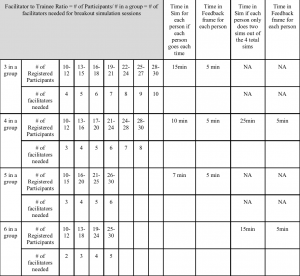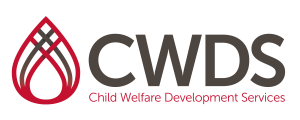CWDS Curriculum
Quality Supervision For Child Welfare Leaders: Advanced Simulation
Level: Advanced Practice
Credits: One Day Simulation, 6 hours
Intended Audience: This class is intended for any Child Welfare Professional who supervises others; Supervisor, Manager, Deputy Director
Description of Course: The Child Welfare Development Services Simulation on Quality Supervision was specifically designed to provide a safe and trusting learning environment for Child Welfare supervisors in which they have opportunities to apply the knowledge and skills they acquired in their current practice and trainings. It also gives the supervisors a way to try on tools readily available but not often employed in the supervision format. The classroom course “Integrating Safety Organized Practice into Supervisory Practice” is a recommended but not mandatory pre-requisite for this course.
Intended Learning Objectives:
Knowledge
K1. The learner will be able to identify the agency tools that are available to them to support facilitative supervision.
K2. The learner will be able to identify the SOP tools available to them to support facilitative supervision.
K3. The learner will be able to identify the different roles of a supervisor and when different situations require them to take on different roles; coaching, training, facilitative, supportive and disciplinary.
Skill
S1. In the simulation, the learner will be able to demonstrate a facilitative approach (vs a directive approach) to support and increase staff’s critical thinking by utilizing SOP tools within supervision to include Appreciative Inquiry (AI), Solution Focused Questions (SFQ), Safety Organized Practice’s (SOP) three questions, cultural humility, multicultural guidelines, trauma informed practice and exploration of bias and countertransference.
S2. In the simulation, the learner will be able to use evidence based tools such as SDM and Safe Measures to guide decision making and increase safety, wellbeing, and timely reunifications for clients.
S3. In the simulation, the learner will be able to identify and use techniques to engage and support employee’s individual learning styles, professional development, self-care, and case management skills.
Values
V1. The learner will value the time spent in scheduled supervisions vs in the moment consultations.
V2. The learner will value the role of the social worker as the expert regarding the family and nurture their ability to make the family’s voice heard.
Topics Include:
- Safety Enhanced Together Vision, Priorities and Values
- SDM
- Safe Measures
- Facilitated Supervision
- Appreciative Inquiry
- Gallup Strengths
- Cultural Humility
- Performance Review
- Self-Care
Contractor/Developer Biography: Various Contractors
Additional Information Needed to Successfully Schedule the Simulation:
- What type of space is needed (i.e. How many large rooms for the group work and how many breakout rooms, will the large room be used as a breakout room?):
- One large group for group work and up to five break out rooms.
- How many scenarios:
- 5
- What type of actors:
- All of the actors are playing the role of a child welfare worker.
- Actor/Facilitator ratio: 1 actor/1 facilitator, this simulation can accommodate up to five teams (one actor/one facilitator) depending on how many learners are registered in the class.
- Start and End Times: 9am-4pm
- Maximum participants: 15

Trainer Development



